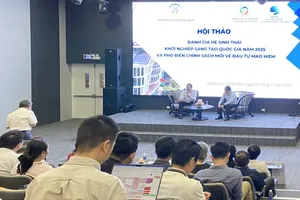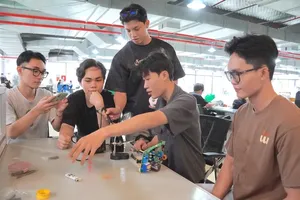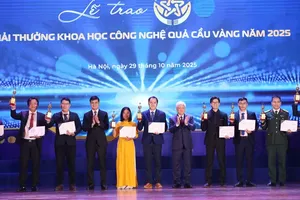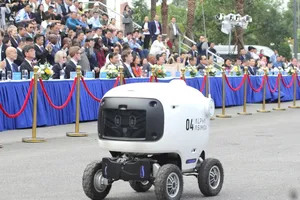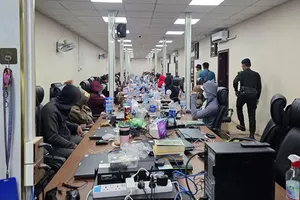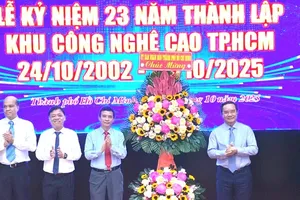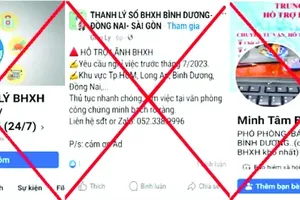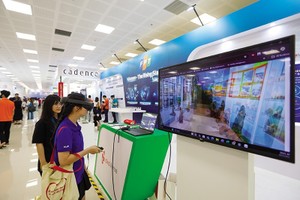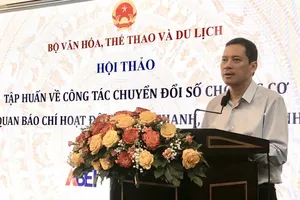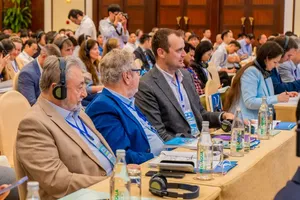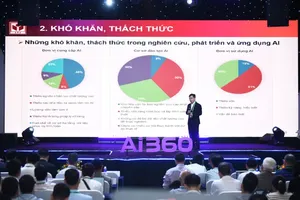
Recently, a TikTok channel named P.T., which boasts tens of thousands of followers, has been regularly posting AI-generated clips. These videos mimic the voices and appearances of several high-ranking State leaders, inserting them into fabricated statements about sensitive incidents or even content aimed at defaming personal honor.
One such AI-generated clip depicted a supposed conversation between two figures about a recent BMW car accident in Hanoi, while another discussed the cause of the fire at Doc Lap apartment building in HCMC. Each video was laden with distorted content, attracting hundreds of thousands of views and hundreds of comments that were steered in a misleading and negative direction.
These hostile forces don't rely on a single account; they create numerous different profiles to amplify these distorted and false clips. More alarmingly, many social media channels are initially established to appear “official”, specializing in posting information about legal policies to build trust with their audience. Then, these pages make an abrupt U-turn, publishing blatantly distorted content.
A channel known as N.D.N., for instance, after a period of normal operation, suddenly posted false videos claiming that “The Party has approved the Same-Sex Marriage Law” or that there “will be heavy penalties for divorce due to a third person”. These videos garnered tens of thousands of likes and comments from people who believed them to be true, demonstrating an alarming level of reach and perceptual manipulation.
Statistics reveal that in 2024 alone, over 20,000 pieces of false information were disseminated daily on Vietnam’s cyberspace, a significant portion of which were produced using AI. Notably, hostile forces have even constructed entire networks of AI-controlled virtual accounts to automate the process of commenting on, sharing, and “reacting” to this subversive content.
The Department of Cybersecurity and High-Tech Crime Prevention (A05) under the Ministry of Public Security previously reported that in 2023, over 60 percent of channels spreading disinformation were operated from abroad, with many using deepfake technology to forge the images and voices of celebrities or leaders.
Head Than Ngoc Anh from the Faculty of Philosophy at the Academy of Politics Region II observes that fake, distorted, and subversive content is growing ever more sophisticated with technological advancement. Specifically, AI is being used to create content that misrepresents policies and impersonates leaders, all with the goal of more easily reaching the public, especially the youth.
This has led to a cascade of consequences, including the erosion of public trust in the State, fostering misconceptions about the country’s situation, promoting ideological deviation, and tarnishing the nation’s international image.
“A particularly grave danger”, he warns, “is the incitement of internal conflict, creating a risk of political and national security instability, which aligns perfectly with the ‘color revolution’ playbook.”
Facing this serious state, he proposed that the Party and State must refine legal policies, particularly the cybersecurity framework. He also stresses the vital role of media agencies in leading the charge to identify and refute disinformation.
“At the same time”, he adds, “the Propaganda and Mass Mobilization sector, especially at the grassroots level, needs to enhance direct communication, integrating these messages into party cells and school activities to raise awareness about the new plots and tactics of hostile forces.”
Director Le Trung Phat of Le Trung Phat Law Firm in HCMC further clarifies the legal standing. He points to Article 8 of the 2018 Law on Cybersecurity, which explicitly prohibits spreading false information that causes public confusion, damages socio-economic activities, obstructs State agencies, or infringes upon the rights of others.
Therefore, individuals or organizations using AI to create violating content like those mentioned above can be prosecuted. Depending on the severity, penalties can range from administrative fines of VND10-20 million (approx. US$400-$800) according to Article 102 of Decree No.15/2020/ND-CP to criminal charges for “Insulting others” (Article 155), “Slander” (Article 156), or “Abusing democratic freedoms” (Article 331 of the Criminal Code).
Mr. Le Trung Phat also warns of a rising trend where individuals and organizations commit illegal acts under the guise of providing free legal advice. “They often give incorrect legal counsel, misdirecting viewers”, he analyzed. “This abuse not only affects citizens’ rights but also impacts social security and order.”
At a recent mid-2025 review conference for the Department of Cybersecurity and High-Tech Crime Prevention, the Ministry of Public Security’s leadership has directed the unit to focus on drafting the 2025 Law on Cybersecurity. A key priority is to research and build a legal foundation for new challenges, specifically those including AI.
